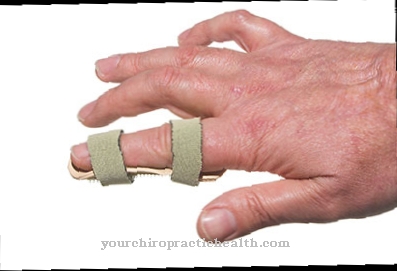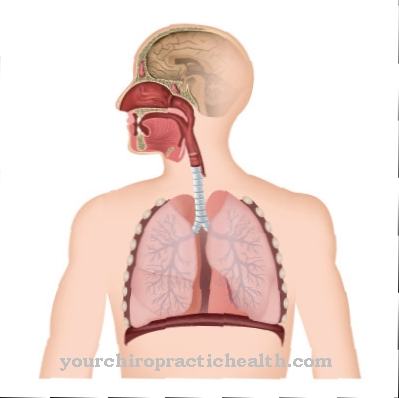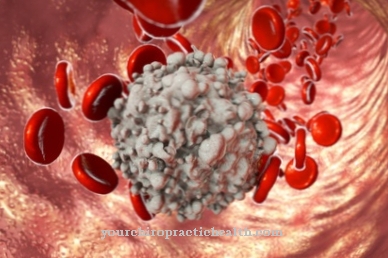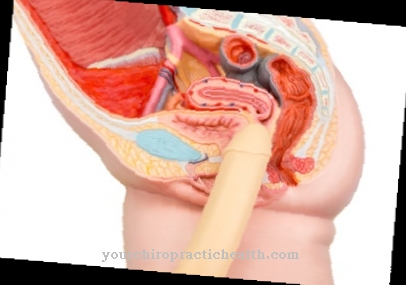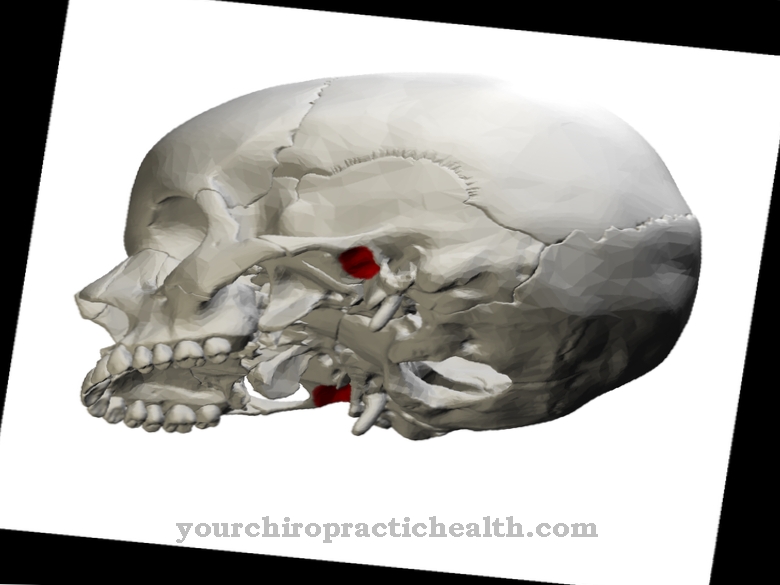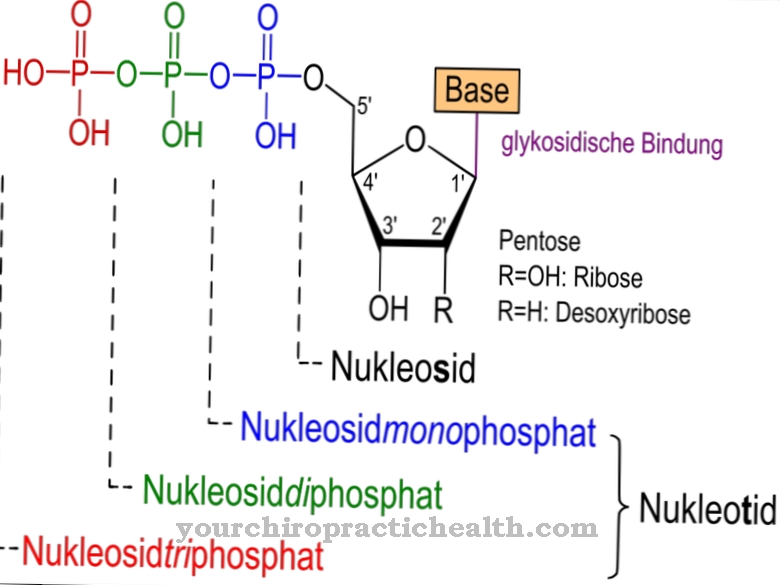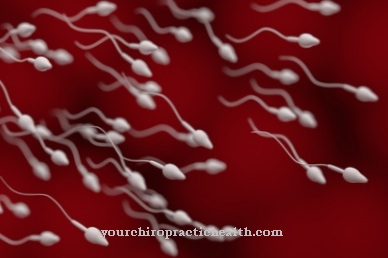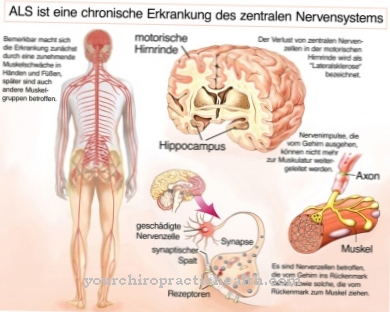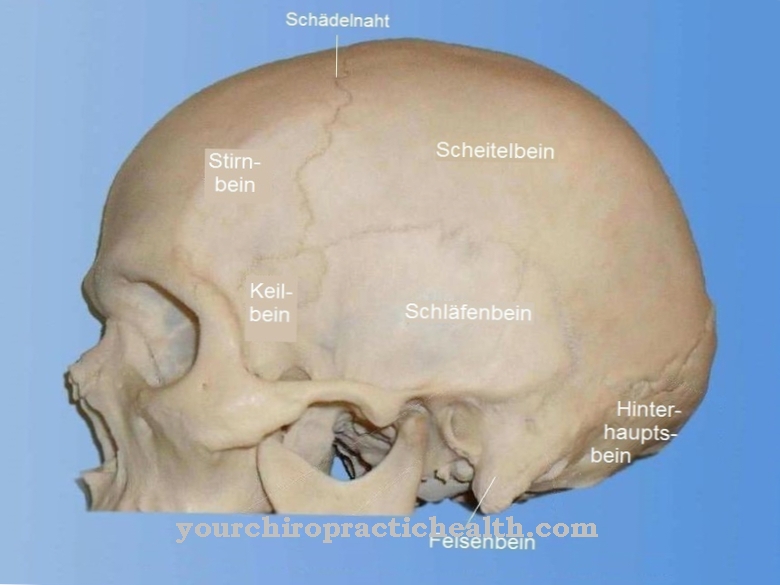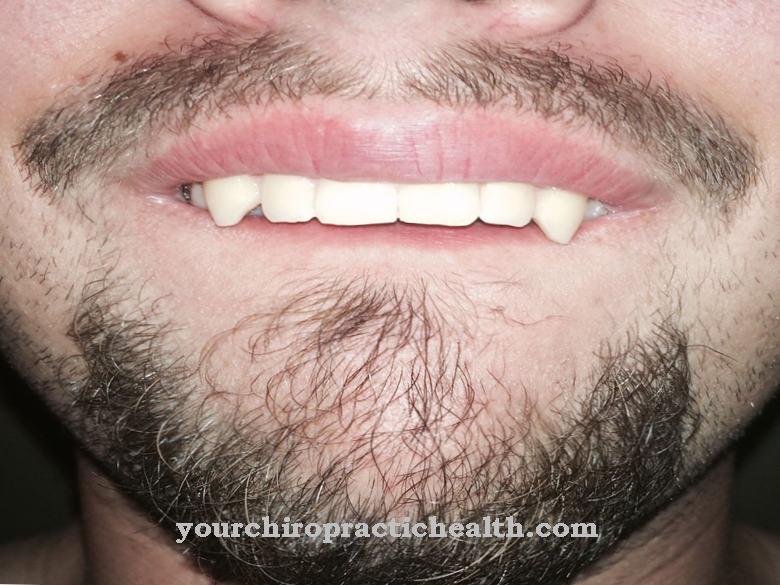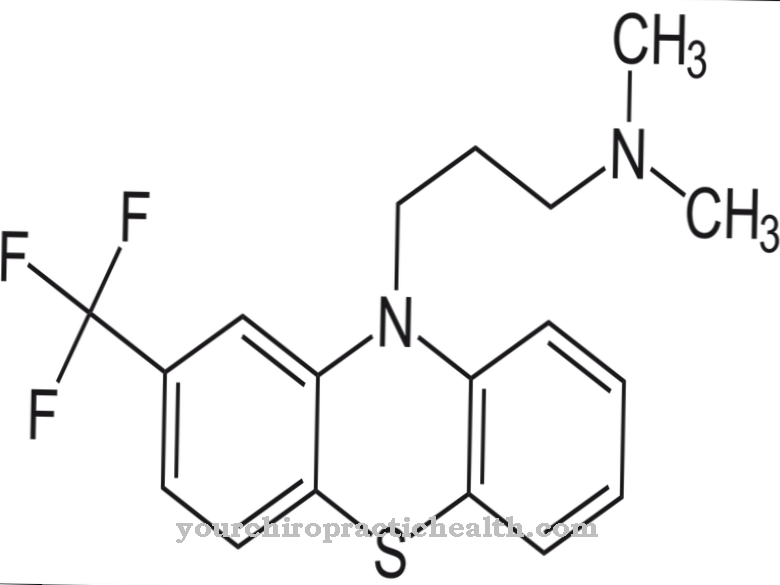A sprain is also called in medicine Distortion designated. It is one of the most common and common injuries in sports, hiking, and at work. In the case of a sprain, the capsules and ligaments of the joint are overstretched and injured. This often happens through careless and unconscious over-movement of the affected joints. Typical signs are severe pain, especially when exerted, bruising (bruises) and swelling of the affected areas.
What is a sprain?
A sprain, from the doctor as Distortion (Latin for twisting, distortion) is a joint injury that results from overstretching the joint capsule and the stabilizing ligaments. The joint capsule is a tight, connective tissue covering that encloses the joint and, like a bag, prevents the joint surfaces from becoming detached from one another.
Particularly stressed areas are also stabilized by ligaments. In extreme cases, ligaments or joint capsules can even tear. Most often, a sprain is accompanied by bleeding in and around the joint. Further possible accompanying injuries are: rupture or displacement of the articular cartilage, accompanying soft tissue injuries, nerve damage. A fresh sprain manifests itself as pain, swelling, tenderness, bruise (this can appear up to 12 hours later).
causes
Most common is one sprain of the foot. The classic injury scenario here: a kink of the foot over the outer edge while turning the body outwards. The kinked foot cannot follow the rotation of the body, so that the joint capsule and the stabilizing ligaments are pulled, which prevent the joint surfaces of the foot and lower leg bones from becoming detached.
Sprains are particularly common in sports such as tennis, basketball or soccer. The knees and hands are also frequently affected, but an injury to almost all joints is possible. Risk factors for a sprain are: The practice of high-risk sports, especially at a high level of performance or without a sufficient warm-up phase, lack of coordination, a generally poor state of training with insufficiently developed muscles.
But also previous injuries to the ligamentous apparatus at the corresponding joint. Even slight sprains, if they occur more frequently, can lead to pronounced instability of the joint - one then speaks of the joint. The worn out capsule-ligament apparatus also affects the joint mechanics, which exposes the joint cartilage to increased stress and can accelerate the wear and tear process (osteoarthritis). Therefore, even in the case of apparently insignificant injuries, it is better to see a specialist once too often in order to minimize consequential damage.
Symptoms, ailments & signs
A sprain is quite a painful and uncomfortable affair that is usually accompanied by fairly typical and straightforward symptoms. Affected people feel severe pain immediately after the sprain, which persists even when the sprain is at rest. A normal movement sequence is therefore not possible with a sprain.
In some particularly severe cases, a swelling can be seen that is visible to the naked eye. Continuous cooling can eliminate these symptoms of a sprain. If you see a doctor immediately when these symptoms occur, you can count on a quick and complete healing. However, if you do not seek medical or medical treatment, you must expect the individual symptoms to worsen considerably.
The pain increases considerably and under certain circumstances an inflammation of the nerve tracts is possible. In particularly bad cases, permanent consequential damage is even possible if a visit to the doctor is postponed. A sprain usually shows clear symptoms, so that a self-diagnosis can often be made.
In order to bring about an improvement or elimination of the symptoms, an appropriate treatment is essential. Otherwise the symptoms will intensify and permanent consequential damage threatens.
Course of disease
The injury or sprain there is an initial phase in which the tissue swells, a bruise forms, and so on. This phase is completed after 48 hours at the latest. A medical examination should be carried out as early as possible. After just 6 hours, for example, a "held exposure", i.e. an X-ray in which the joint is fixed in the same position in which the injury occurred, no longer makes sense.
The additional stress on the joint could lead to further injuries. in the following 4-6 weeks the destroyed tissue forms anew, so that the injury is usually considered to have healed after 6 weeks.
Complications
A simple sprain usually doesn't cause complications. However, the distortion often occurs as part of combination injuries - this slows down the healing process. For example, if there is a complete torn ligament, it can take up to twelve weeks for the sprain to completely subside.
If the capsular ligaments are torn in addition to the sprain, they may grow together like a scar and lead to poor posture and other complications. The sprain itself can also cause poor posture. As a result, joint wear may then occur or chronic pain may occur. Failure to adequately treat the sprain can lead to chronic joint instability.
Above all, sprains on the foot repeatedly cause long-term effects, as the leg is exposed to extreme stress every day and the injury is often not completely healed. But surgery also carries risks.
Nerve injuries, infections and wound healing disorders can occur. The administration of painkillers and anti-inflammatories carries additional risks, because side effects and interactions cannot be ruled out. In the worst case, severe allergic reactions occur after taking a drug.
When should you go to the doctor?
If there are limb complaints after a minor accident or injury, the impairment to health should be monitored further. If there is relief after a few minutes or if symptoms are free within half an hour, no doctor is required.
In these cases the self-healing powers of the organism have contributed in a sufficient form to an improvement in the situation and recovery. If the symptoms increase or irregularities persist, a doctor should be consulted. Swellings, changes in the appearance of the skin or impaired mobility must be examined and treated. A blue discoloration of the affected region is worrying.
A loss of physical strength, a decrease in performance and sensitivity disorders of the skin are further signs of an existing disease. A doctor must be consulted so that various tests can be ordered and performed to clarify the cause. A diagnosis is often only possible after imaging techniques have been used and clarity about the state of the skeletal system.
If sporting activities can no longer be carried out as usual or if problems arise in coping with everyday life, the person concerned needs help. Restrictions in the gripping function of the hands, problems with the joints and disorders of locomotion indicate irregularities in the skeleton. They must be examined by a doctor.
Treatment & Therapy
First and most important action after a Sprain should be the application of the PECH rule. This means a total of 4 first aid measures:
1. Immobilization to protect the joint and avoid further injuries.
2. Ice for cooling. The actual direct contact application of ice should be avoided. Mild cooling above freezing point is advisable in order to reduce the swelling and to reduce the pain. Cool packs should be stored in the refrigerator rather than in the freezer.
3. Compression, also to limit the swelling. This can already be done at the scene of the accident by simply pressing; a pressure bandage should be applied later.
4. Elevate. Another measure against the swelling. Elevated body parts should be above the patient's heart if possible.
Aftercare
There is usually no need to see a doctor for minor sprains. The affected part of the body should be spared and raised as often as possible. Compression bandages on the injured joint help the body accelerate the healing process. Cooling compresses or warm pads with essential oils or green tea also have a supportive effect to alleviate the pain, which can sometimes be severe.
In the pharmacy there are over-the-counter pain relieving creams, also on a homeopathic basis, which also promote healing. It can take several months for the joint to be fully resilient again after a sprain. During moderate physical activity, supportive bandages should therefore be worn at the beginning in order to protect the joint as much as possible.
If severe pain or bleeding occurs with severe sprains, a doctor should be consulted. Using imaging methods such as X-rays or ultrasound, this can detect a possible break or ligament injury, which usually requires surgery.
The measures the patient can take themselves of course depend on the severity of the sprain. It is strongly recommended to take care of yourself, walking aids or special sports shoes can be used to help. Appropriate physiotherapy can also help the patient to mobilize the affected part of the body as quickly as possible.
You can do that yourself
A sprain should be evaluated by a doctor to rule out serious fractures or nerve damage. Mild sprains can be treated yourself by sparing the affected part of the body. Regular elevation and the use of compression bandages support the healing process of the bone.
Cooling compresses help with pain. Later on, warm pads with essential oils or home remedies such as green tea can be used to relieve the pain. Alternatively, pain-relieving creams from the pharmacy or homeopathic cabinet are available.
After a sprain, it takes a few months before the joint is fully resilient. Before this, gentle training is recommended, with supportive bandages being worn. A doctor is recommended for severe sprains. This also applies if bleeding, intense pain or other injuries occur.
If the ligaments are injured, surgery is often necessary. What measures the affected person can take themselves in this case depends on the location and severity of the sprain. General measures such as rest and supportive physiotherapy are indicated. Special running shoes or bracers support the impaired limb and thus also contribute to a quick recovery.


.jpg)
